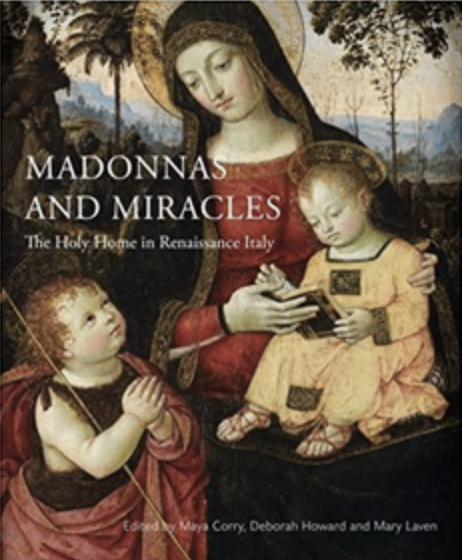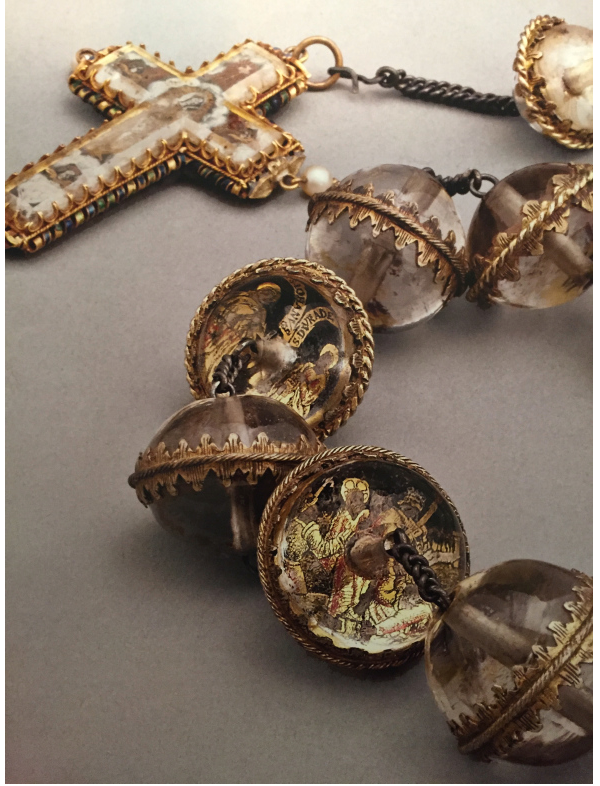Several months ago, I heard about an exhibit in Cambridge at The Fitzwilliam Museum entitled: “Madonnas and Miracles: The Holy Home in Renaissance Italy.” While I was unable to make it to the exhibit in person, the museum published an accompanying coffee table book featuring many highlights.

The goal of the exhibit was to re-frame the renaissance by telling a new story that put the focus on the home and the family instead of looking only at illustrious artists of the period. While many of the details of familial devotion may not be surprising to Catholics who live out their faith today, the exhibit showed remarkable objects of devotion that can and should inspire all of us.
Among the items are such things as this 16th century rosary. Looked at straight on, the beads appear to be merely lovely quartz, but when turned slightly, images of Christ’s passion and saints appear to assist in meditation on the Sorrowful Mysteries. (All photos from Madonnas & Miracles.)

There is also this stunning 16th century pendant that is similar to one worn by a woman in the painting Portrait of a Young Woman, painted by Agnolo di Domenico Mazziere, c. 1490.

The backside of the cross says “verbum caro,” Latin for “the word became flesh.” Verbum is placed on the vertical piece, symbolizing the connection between heaven to earth, while caro is horizontal, representing the human or earthy. These hidden words of the pendent would be worn literally on one’s heart.
And then there are these gems.

They are a set of 16th c. butter knives. As the book explains:
These four knives with ivory or ebony handles and etched steel blades show how music would enhance devotion tin the Italian Renaissance home. Each one is inscribed on the blade with the name of a voice part (‘Superius’, ‘Contratenor’, ‘Tenor’ and ‘Bassus’) and the words and music of a Benediction on one side of the blade and a Grace on the other.
While most of us are just content with Catholic items not made in China, an exhibit like this reminds us that there is a trove of ideas that can be claimed and remade in contemporary studios by gifted artists.

